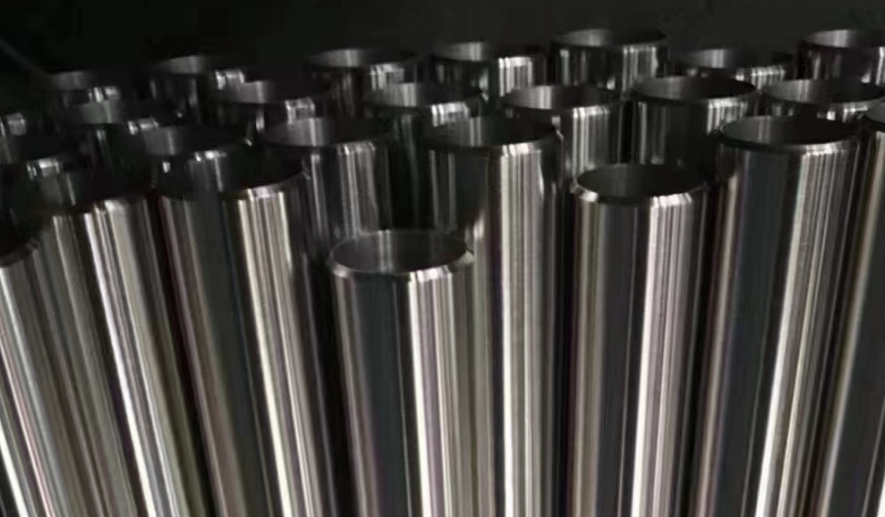Stainless steel, a corrosion-resistant alloy with a minimum of 10.5% chromium content, finds its way into various industries due to its excellent properties. Within the vast family of stainless steels, grades 308 and 309 are two commonly used alloys, each with its own unique characteristics and applications. In this article, we delve into the differences between Chitsulo chosapanga 309 vs 308, exploring their composition, properties, and usage scenarios in detail.

Stainless Steel 309 vs 308 - Kusiyana kwake ndi Chiyani?
Chitsulo chosapanga dzimbiri 309 vs 308 - 1. Mapangidwe
The fundamental difference between Stainless Steel 308 and 309 lies in their chemical composition. Stainless Steel 308 is an chitsulo chosapanga dzimbiri cha austenitic, primarily designed for welding operations on similar stainless steels, such as type 304. Its composition typically includes chromium, nickel, and manganese, with the nickel content being higher than in grade 309. This composition ensures good corrosion resistance and weldability.
On the other hand, Stainless Steel 309 is a chromium-nickel stainless steel with a higher chromium and nickel content than grade 308. This composition provides excellent oxidation resistance and high-temperature corrosion resistance. It is specifically designed for welding applications where the base metal has a high carbon content or is subject to service temperatures above those normally encountered with grade 308.
Stainless Steel 309 vs 308 – 2. Properties
The compositional differences between these two grades lead to distinct physical and mechanical properties. Stainless Steel 308 offers good ductility and toughness, making it suitable for welding applications that require a high degree of formability. Its corrosion resistance is comparable to that of grade 304 stainless steel, ensuring long-term durability in various environments.
Stainless Steel 309, on the other hand, exhibits superior oxidation resistance and can withstand higher temperatures than grade 308. It is often used in welding applications where the welded joint must perform under severe conditions, such as high-temperature environments or corrosive media. Additionally, the higher chromium content in grade 309 enhances its resistance to scaling and oxidation, making it a preferred choice for high-temperature applications.
Chitsulo chosapanga dzimbiri 309 vs 308 - 3. Mapulogalamu
The distinct properties of Stainless Steel 308 and 309 dictate their specific applications. Grade 308 is commonly used for welding type 304 stainless steel, as it provides a similar corrosion resistance profile and ensures a strong, durable weld. It is often employed in the food processing, chemical processing, and medical equipment manufacturing industries, where corrosion resistance is a critical factor.
Stainless Steel 309, on the other hand, finds its application in welding carbon steel or low-alloy steel to stainless steel, especially when the welded joint will be exposed to high temperatures or corrosive environments. It is also used in the petrochemical, power generation, and heat treatment industries, where materials must withstand extreme thermal and chemical conditions.
Stainless Steel 309 vs 308 – 4. Weldability
Both grades offer good weldability, but their welding characteristics differ slightly. Stainless Steel 308, due to its higher nickel content, exhibits excellent weldability and is less prone to cracking during welding. It is often used as a filler metal for welding type 304 stainless steel.
Stainless Steel 309, while also weldable, may require special welding techniques and procedures to avoid hot cracking and ensure a sound weld. The higher chromium content in grade 309 can increase the risk of hot cracking, necessitating the use of low-hydrogen welding processes and proper preheat and post-weld heat treatment.
Stainless Steel 309 vs 308 – 4. Cost
In terms of cost, Stainless Steel 308 is generally more economical than grade 309. This is primarily due to the difference in raw material costs and the relative ease of welding grade 308. However, the choice between these two grades should not be solely based on cost but should also consider the specific requirements of the application, such as corrosion resistance, high-temperature performance, and welding conditions.
Kutsiliza
In summary, Stainless Steel 308 and 309, while sharing similarities as stainless steel alloys, have distinct differences in composition, properties, and applications. Grade 308 is suitable for welding type 304 stainless steel and offers good corrosion resistance and weldability. Grade 309, on the other hand, is designed for welding carbon steel or low-alloy steel to stainless steel and exhibits superior oxidation resistance and high-temperature performance.
Thank you for reading our article and we hope it can help you to have a better understanding of the differences between Stainless Steel 309 vs 308. If you are looking for Stainless Steel 309 & 308 supplier and manufacturer online now, we would advise you to visit Sino Stainless Steel.
Monga ogulitsa zitsulo zosapanga dzimbiri kuchokera ku Shanghai China, Sino Stainless Steel imapereka makasitomala apamwamba kwambiri. mapepala okongoletsera zitsulo zosapanga dzimbiri, zitsulo zosapanga dzimbiri machubu, mapaipi achitsulo chosapanga dzimbiri, zitsulo zosapanga dzimbiri, zitsulo zosapanga dzimbiri, mbale zitsulo zosapanga dzimbirindipo zitsulo zosapanga dzimbiri pamtengo wopikisana kwambiri.
posts anati:
- 309 Stainless Steel (UNS S30900) - Mapangidwe, Katundu, ndi Ntchito
- Chitsulo Chopanda 309 vs 304 - Kusiyana kwake ndi Chiyani?
- Chitsulo Chopanda 309 vs 321 - Kusiyana kwake ndi Chiyani?
- South Africa ikhazikitsa tarifi pa katundu wa chrome ore, ndipo 83% ya chrome kuchokera kunja kwa China idzachokera ku South Africa.
 Zachizolowezi: + 86-18621535697
Zachizolowezi: + 86-18621535697  Chithunzi:export81@huaxia-intl.com
Chithunzi:export81@huaxia-intl.com